#Gottfried Lake
Text






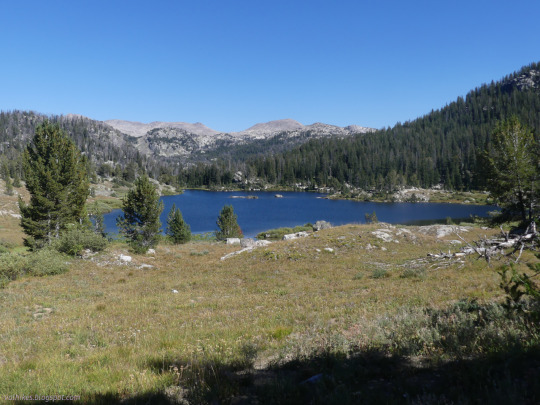


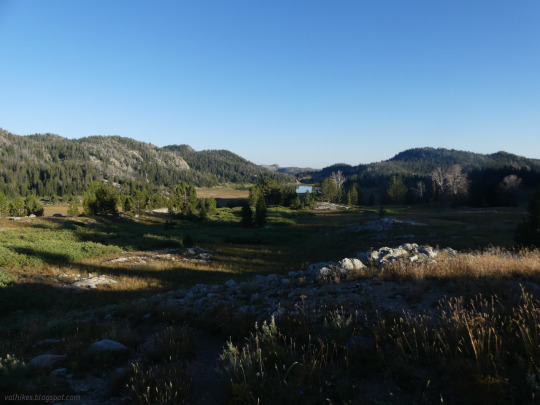
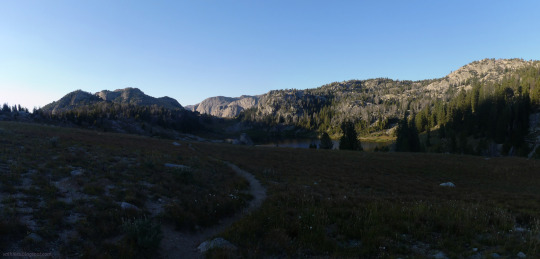
Bridger National Forest, Wyoming.
Second day backpacking Bridger Wilderness left the grand views by Pine Creek Canyon for the rolling rocky land full of lakes.
#hiking#backpacking#trekking#Wyoming#Bridger National Forest#Bridger Teton National Forest#Bridger Wilderness#Heart Lake#Trapper Lake#Little Trapper Lake#Palmer Lake#landscape#nature#travel#hike#Dean Lake#Gottfried Lake#Fremont Lake#lakes#glacial carved#mountains#outside
1 note
·
View note
Text
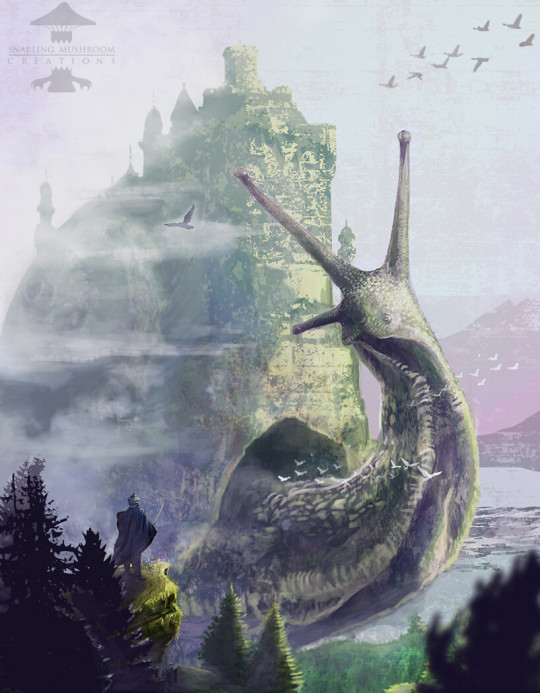
Adventure: A visit to Dawdlewall Fortress
Well there goes the neighbourhood... won't be too hard to catch it though....
Meet Clover, She's a primordial spirit of the land, and a very polite one at that. She embodies the place where the ancient mountains meets the lush green of valleys and lakes below, and her name is derived from an ancient elven poetic composition about her that refers to her mowing through the canopy like it was clover in a lawn.
In times of yore, a great hero awoke her to save their home from an invading army, simultaneously breaking the cliff-face free an undauntable defender. In the usual course of things a spirit like clover would have been unsummoned as soon as the crisis had passed, but the hero and all of their neighbours were just so taken with the gentle giant that they decided to let her stay.
Generations later, Clover has become a beloved local icon, gently grazing the surrounding forests while the fortress on her back serves as the region's seat of power. While most rulers of Dawdlewall have tried to live up to the hero's example the most recent; Gottfried Scarlett, Earl of Eastcress has turned out to be a bit of a bastard. Having ascended to rule Dawdlewall through a convoluted inheritance scheme, he intends to use his authority to wring the region dry of riches, backing up his power grab with kaiju sized threats.
Adventure Hooks:
The party can run into the earl's forces in a number of ways, having set up impromptu toll roads, shaking down local guilds, strong arming tavern staff for free service, ubiquitous "assholes throwing their weight around" type of behaviour. Things inevitably come to a head when the party delve a local dungeon and end up running face to face into the earl's "tax collectors" insisting that they need to pay a "delving fee". A brawl ensues, and the party either find themselves carted off to the Dawdlewall dungeons or on the run with a bounty on their head.
In attempting to fill his treasury as much as possible, Earl Gottfried has ironically made himself tremendously easy to rob. Wagons full of extorted gold make their way across the marshy roads towards the fortress snail. Though well guarded, these trusted troops are overworked and prone to error. Start planning your robinhood ambushes now.
As one of the many privileges granted to him by his new noble title, the Earl has seized control of the ancient hero's staff, which is the only means of communicating with Clover. He's already steered the oblivious primordial to crush a tiny logging hamlet that refused his unjust enchroachment , allowing the denizens to evacuate as a show of his magnanimity (also because it's hard for a giant earth-churning snail to sneak up on anyone). Seizing this staff is the key to kicking Gottfried to the curb (or off the edge of the Fortress, if the party is feeling particularly dramatic) but suddenly puts the heroes in a difficult position. Who can they trust with Clover's titanic power? Do they keep the staff for themselves or use it as a bargaining chip in the power vacuum left by their enemy's departure?
Artsource
202 notes
·
View notes
Text
in honor of bargaining for my new job's first contract starting last week here are Arthurian characters ranked by how much I would want them to be on a bargaining team with me:
The Lady of the Lake: lead negotiator. This one is a gimme. She knows the rules of the game in intimate detail, and knows exactly when to follow them to the letter and when to ignore them. Also I feel her gravitas would really lend moral support to the union team.
Brangienne: a skilled political operative, a trusted advisor, a fixer. At least in Gottfried manages to be trusted by both Isolde and Mark, while being completely loyal to Isolde, and can be helpful to have at least one person who can convincingly charm management
Guenevere: a strategist, a beloved queen, levelheaded when the issue is not hot, mentally ill knights. Helpful both for crafting table strategy, and motivating and rallying the bargaining unit
Dinadan: the token knight on the team. Pragmatic, eloquent, would probably not fuck things up too badly and would be excellent at making signs and chants at rallies
Kay. His organizational skills and administrative knowledge would probably be quite helpful. This could easily be cancelled out the first time he opens his mouth, especially if some version of “be civil” was agreed upon in the ground rules
Gawain. Depends on the Gawain, but French Gawain would maybe strike a pretty good balance of remaining calm when necessary and going apeshit when appropriate. Maybe.
Arthur: this man has no gears in between “start a war with Rome” and “believe the best in all sides and try to urge everyone to get along”. Neither position is particularly helpful here.
Morgan le Fay. “No, Morgan, we cannot roofie the management lawyer. Or throw him in a dungeon. No, not even a nice one. Or steal his notes and draw dicks on them. Or send him a cloak that bursts into flames.”
Lancelot. No.
#look I know these characters would really be my class enemies#with the possible exception of Brangienne#although I'm not even quite sure about that#just let me have this#arthuriana
7 notes
·
View notes
Text
The Return of Arthur in 2021
The Return of Arthur in 2021
Growing up, stories of King Arthur and the Knights of the Round Table were among my favourite things. I remember sitting just inside my bedroom door at night in Grade 3, illuminated by the hall light, reading, reading these stories. In junior high, I read T H White’s The Once and Future King, and my family was involved in the local music and drama society’s production of Camelot a few years…

View On WordPress
#gottfried von strassburg#jack whyte#king arthur#lancelot of the lake#malcolm guite#matter of britain#sir gawain and the green knight#stephen r lawhead#the green knight movie#the quest of the holy grail
0 notes
Note
fave poems?
keeping things whole (mark strand)
teodoro luna's two kisses (alberto rios)
the portrait (stanley kunitz)
if a tree could wander (rumi)
a litany for survival (audre lorde)
the widening sky (edward hirsch)
lake-loop (natalie diaz)
the sugar thief (ned balbo)
yet to die. unalone still. (osip mandelstam)
won't you celebrate with me (lucille clifton)
sleeping in the forest (mary oliver)
an envelope (jack underwood)
figs from thistles: first fig (edna st. vincent millay)
conversation (ai)
threat (gottfried benn)
286 notes
·
View notes
Text
i've decided to name some unnamed people from rusty lake (I WROTE LUSTY RAKE BY ACCIDENT)

walter vandermeer

lillian vandermeer (nee roscoe)

edward vandermeer

sophronia vanderboom (nee ledford)

paul john gottfried

henrietta jones

larry johnsson

geralt babushkin
alright! that's all for now. i'll do a part two for some of the animals :D
#wtf did i just write#i can't tell whether i'm sorry or not tbh#these names may be kind of silly. oh well.
18 notes
·
View notes
Text
Get to know me!

Name: Brimstone
Age: 25+
Preferred pronouns: They/Them
Sexuality: Does self-love count?
Zodiac Sign: Leo!
Taken or Single: Single Pringle
Three Facts
⭐ -- I met Gilbert Gottfried once
⭐-- I have an extra pinkie toe.
⭐-- My mom wanted to name me Havasu. ( A lake in Arizona )
Experience
How long (months/years): Since 2010 easily. Started off with texting rp with friends, and then moved onto paper rp with friends in school, and then chatzy... then skype.... wow..
How'd you start?:Texting my friends back and forth back in middle school and high school.
Muse preferences
Female or Male (or other): Funny guys. Comedians.... goofballs who are anxious but mean well?
Favorite muse: Digit!!! SQUAWK!
Least favorite muse: N/A
Writing preferences
Plot or Memes?: Memes! I love having small things to work with, and build off of.. even when its a silly sentence meme. Its all about working with what you’ve got.
Are you like your muses?: Oh my god oh my god yes. Yep. I constantly have gilbert living in me.
Tagged by: @friendsamongstars
Tagging: Viewers like you, Thank you!
#R-fair-city ; Memes#Thanks so much!!!#Brimstone is pleased#Excuse me sir that's my emotional support they/them ; OOC
3 notes
·
View notes
Text
book notes
for anyone who is interested in a nuanced take on fairy beliefs vs the Christian Church in the Middle Ages, this book by Richard Firth Green was actually so good, if your library has it:

[Image: Front cover of the book ‘Elf Queens and Holy Friars: Fairy Beliefs and the Medieval Church’ by Richard Firth Green]
like, obvs it’s just one person’s take on a very complex topic, but it’s well-written, well-researched, and it uses a bunch of Arthurian examples throughout to explore this dynamic (see under cut)
really interesting exploration of how the Church’s response evolved from the early-High Middle Ages (”dude, you believe in fairies? hhhmmm, do penance for 10 days”) to the Late Middle Ages/Early Modern Period (”kill them for heresy and witchcraft!”)
and how it enfolded vernacular/fairy beliefs into Christian doctrine as fairies being either a) demons or b) the illusions of demons (and how dangerous/bad these demons were depended on the time/location/cleric in question - some packaged fairies as “neutral” demons who fell when the rebel angels did, and who must be punished on Earth but will return to Heaven on Doomsday - potentially doing this to soften things for their parishioners, who often held these fairy beliefs and reconciled them with Christianity, uh, differently than the Church officially would prefer)
and enduring belief in fairies existed in both common and aristocratic circles (can see this in medieval romances, although they’re not the only source of evidence), rather than just being used as cultural “decoration” by a more sceptical upperclass
aaaaand because of this conflation of fairy = demon, you get a really interesting blend/overlap with medieval demonology and enduring “folk” beliefs (obvs not all of medieval demonology was just rebranded fairies, but some of it defs was - you see stories being retold with “devil” instead of “elf”, for example)
INCLUDING in Arthuriana - how you get Morgan the Fairy (”le Fay”) vs Morgan who was raised in a nunnery and learned dark magic there, the Lady of the Lake as a (largely) positive force, Merlin inexplicably as a (perceived to be...) Good Guy despite being the literal antichrist, the Green Knight and all the overlap with Christian symbolism in that story, etc, etc. and they all just either??? co-exist in the same stories or appear through either more fay or more ~Christian lenses depending on the version
and it creates a very interesting and very confusing soup of Stuff stemming from a very confusing - and sometimes dangerous - soup of official and unofficial beliefs evolving over hundreds of years
anyway, WRT Arthuriana it’s got (and ymmv on these, but they’re all interesting thoughts):
(i think in Gottfried’s Tristan???) apparently Tristan has a rainbow fairy dog called Petitcriu...name a knight less deserving of such a Good Boy smh
Chretien’s Yvain flooding out Laudine at the fountain (...jerk) as a continuation of the beliefs surrounding a magical Spring at Barenton
Gingalain moving from being the son of Gawain and the fairy Blanchemal (and having a fairy love interest, Pucelle) in the French OG version (~1200-ish) to being the son of Gawain and his human mistress (with Pucelle also being human) in a later 15th-C Middle English version)
AJDKN UJ IOE E Merlin’s conception, that one’s a wild ride - theologians REALLY didn’t like the idea of demons being fertile, and the work-arounds they came up with were...incredible. but skipping over that sheer comedy, the author draws links between Merlin’s conception and the general trend of claiming a fairy lover/whatever when a difficult-to-explain pregnancy arose. He also theorises that Geoffrey’s idea for Merlin’s father being a demon/fairy may have come from Nennius saying that Merlin/Ambrosius’ mother “never knew a man”. Later adaptations of this storyline made it even more fay-like (when they weren’t, like Robert de Boron, making it more fucked-up) by making Merlin’s father invisible (Wace) or a super attractive guy in swanky gold clothes (Layamon) - and Vortigern’s advisor explaining the creatures that lived between the earth and the moon until doomsday, etc, etc (walking that line between fairy and incubi, whichhhhhh was not clearly delineated in the Middle Ages the way it is now). also there’s one 13th-C Anglo-Norman poem where Merlin’s father is a bird that transforms into a dashing young squire, which isn’t terribly demon-y. So even though most versions of this story describe Merlin’s dad as an incubi-demon, what people understood this to mean may have been more fay-ish that we’d expect nowadays (depending on the reader, and also on authorial intention - some are pretty explicit that he’s a demon [many clerics keen to push this as the main narrative], while others refer to him as an elf or fairy). some contemporary scepticism during this time about Merlin having any sort of supernatural parentage as well
[none of the same Church anxieties about explaining away how the Plantagenets and other aristocratic families claim a female fairy ancestress - maybe bc there’s none of the stress about patrilineal bloodlines??? who knows! but yeah, much less thought given to those stories in ecclesiastical circles, and they were very popular in vernacular romances (male aristocratic wish fulfilment?). also, fairy enchantments =/= necromancy, so there are stories like the non-cyclic Lancelot where the Lady of the Lake is found out to be “a fairy by education, not by nature or heredity” (Elspeth Kennedy), with the spirits used in necromancy being demons, not fairies. also potential trend of female-associated magic becoming more passive and book-learned, gradually demonising it leading up to early-modern witch hunts.]
Geoffrey of Monmouth in his Historia and in the Vita Merlini being actually pretty circumspect about saying whether or not Arthur was alive/dead, returning/not returning, maybe due to his work/text being a (hypothesised) defence of the Welsh as being “civilised” (and having been so for centuries before the Normans came) - with the corollary that believing in Arthur’s return was somehow “uncivilised”. Author argues that this may be due to an association with fairy beliefs, and that Layamon is the one that makes Avalon explicitly fey. Also the author describes Arthur as living in a “feminised version of the Christian heaven” (iconic) and says that later writers and people could be very scornful of this belief held by the Britons/Welsh/etc, and that it was contrary to orthodox ways of thinking.
Links the “discovery” of Arthur and Guinevere’s bodies in Glastonbury in the late 12th-C as similar to when individuals found the bodies of their loved ones, thus making it much harder to believe (and hope) that they were still alive in fairyland. Makes a suggestion that the monks in Glastonbury who “found” these bodies may have been trying to curry favour with the English crown (i.e. champion/hope of the Welsh isn’t coming back) but also may have been trying to “help”/”save”/correct the thoughts/ideology of the Welsh (i.e. “set them on the correct path to salvation”). Lots of medieval writers describing Arthur as living in “fairyland”. Precedent of people visiting fairyland and returning, so Avalon/fairyland =/= a place only for the dead (i.e. Arthur isn’t dead). An Arthurian example, albeit a less explicitly fay one, is Lancelot getting in and out of Gorre (with Gorre as a “typically supressed and rationalised” version of fairyland) in Chretien’s Knight of the Cart.
Some stuff about the wild horde (distinct from the wild hunt) being presented by some writers as very penitential (i.e. they are departed souls that may look like they’re bearing arms/hunting/whatever as they did in life, but really they are in agony e.g. because their weapons burn them) and tbh demonic (black armour, carrying torches, ominous aesthetic). Other writers thought maybe it was - once again! - demonic impersonators rather than actual mortal souls. (Should note also that the wild horde/wild hunt motifs were not always associated with their being dead). Relevant in the Arthurian context because Arthur and his court were sometimes associated with the idea of the wild horde (as in, sometimes the wild horde is described as Arthur’s court living it up in a cool, undying sort of way - “in the likeness of knights hunting or jousting, commonly known as the household of Hellequin or of Arthur” [Etienne de Bourbon, a medieval writer] - with Hellequin’s household often being used to encompass either the wild hunt or the wild horde). Ultimate point made by the author (props to him, he’s always like “if i’m right” lol) that for many clerical writers, it was very uncomfortable to leave people with the impression that Arthur and his court were living it up in fairyland (and similar for other figures associated with the wild hunt/horde) and this idea needed to be corrected/shaped to suit more orthodox perspectives - e.g. tying in with notions of purgatory, etc.
Aaaand this one was exciting to me just bc i’ve vaguely heard about Arthur and his knights snoozing under a hill, but for some reason i could only remember this being in Victoria-era-and-onwards poetry. 3 versions of the same tale, where a servant looks for his master’s lost horse on a Sicilian mountain. Version 1) servant of a bishop finds his master’s horse in the beautiful palace of Arthur’s court beneath Mt Etna. Aside from the fact that the ancient wound Arthur received from Mordred opens once a year, it’s not very purgatory-like. Version 2) a dean’s servant is told by an old man that King Arthur has the horse on Mt Gyber (Mt Etna). he is told that his master must attend Arthur’s court in 14 days, but the dean laughs it off...then sickens and dies on the appointed day (whoops). Enough differences to this story compared to the first to suggest an oral circulation. Also a note in the version/text that such mountains are said to be the mouth of hell, and only the wicked are sent there, not the chosen. Version 3) Etienne again! Also likely changed with intervening oral circulation. The master is not an ecclesiastical figure, and Arthur’s palace is now a populous city - also Arthur is not referred to, just a nameless prince. There is a gatekeeper who warns the servant not to eat or drink while he’s there (that...is a very fairy-ish proscription). This mountain is apparently reputed to be the site of purgatory. The book author (Richard, i mean) ties these versions in with other stories/accounts of different entrances to purgatory (e.g. one on an island in an Irish lake) as being part of a gradual process of “rendering [...] fairyland purgatorial”.
Finally, Gawain in Roman van Walewein: To get to an ‘earthly paradise’ [i.e. King Assentijn’s garden with its fountain of youth - side note that ‘earthly paradises’ were often popularly described to be fairyland/where fairies live, in addition to their theological functions, e.g. Avalon was sometimes described as an earthly paradise...i should also say that purgatory was frequently thought to be located beside earthly paradise, so there’s the proximity element] and the castle containing it, Gawain must cross a river (guided by a magical talking fox) that a) has waters that burn like fire, and b) can only be crossed by using a bridge sharper than a razor. His reaction? “Is it the enchantment of elves or magic / that I see?”. He is then guided by the fox underneath the river through a tunnel, and is told that the river’s source is in the depths of hell, and “[the river] is the true purgatory / All souls, having departed from the body / Must come here to bathe.” So it’s a very strong intermingling of fairy and purgatorial imagery/ideas!
I dunno, I just found this very ??? satisfying to read
it leaned towards lit-crit at times (which, considering the subject matter, is honestly fair enough), but it was more respectful of vernacular beliefs than so many other academic takes i see (ofc ymmv re: anything to do with non-Christian major religions, but i think the author’s pretty solid on this!), and it had an explanation for the survival of these beliefs that imo made a lot of sense, especially from a pan-European perspective, not just a Celtic one
plus it explored the undeniable damage done by Christianity over history without making up some “ranged battle between paganism and the Church” that i see e v e r y w h e r e in casual Arthurian circles...which, like, i empathise with the vibe, but also! that’s just straight-up historical revisionism! (i blame MZB and the 80′s for that one)
(there was a fantastic post floating around a while ago about how the religious syncretism in Arthurian literature is much more interesting than peeling away all of the Catholicism in the medieval lit (...you ?? don’t end up with much left?) and saying that this is more “accurate” to some obscure original)
anyway yeah yeah ymmv but it’s v interesting 😊
#arthuriana#Arthurian legend#religion#religious history#christianity#folklore#*#richard firth green#AUDEI FEF HEF this is hilariously long#but really it was such an interesting book!#esp if you're a bit like me and you've been turned away from discussing vernacular/folkloric elements in Arthuriana bc of how badly/weirdly#it's been handled in the past#arthurian literature#medieval history#medieval literature#medieval romance#(also im so sorry to any medieval historian reading this im just throwing around 'The Church' willy-nilly i know it's not a monolith!!!#pinky swear
23 notes
·
View notes
Text
From Peter Hoyt's Facebook:
''Did you know that when Einstein gave lectures at the numerous US universities he was invited to, the recurring question that students asked him was:
Do you believe in God?
And he always answered:
I believe in the God of Spinoza.
The ones who hadn't read Spinoza didn't understand...
I hope this gem of history, serves you as much as it does me:
Baruch de Spinoza was a Dutch philosopher considered one of the three great rationalists of 17th-century philosophy, along with René Descartes in France, and Gottfried Leibniz in Germany.
Here's some of his wisdom:
God would have said:
Stop praying and punching yourself in the chest!
What I want you to do is go out into the world and enjoy your life. I want you to enjoy, sing, have fun and enjoy everything I've made for you.
Stop going to those dark, cold temples that you built yourself and say they are my house! My house is in the mountains, in the woods, rivers, lakes, beaches. That's where I live and there I express my love for you.
Stop blaming me for your miserable life; I never told you there was anything wrong with you or that you were a sinner, or that your sexuality was a bad thing! Sex is a gift I have given you and with which you can express your love, your ecstasy, your joy. So don't blame me for everything they made you believe.
Stop reading alleged sacred scriptures that have nothing to do with me. If you can't read me in a sunrise, in a landscape, in the look of your friends, in your son's eyes... you will find me in no book! Trust me and stop asking me. Would you tell me how to do my job?
Stop being so scared of me. I do not judge you or criticize you, nor get angry, or seek to punish you. I am pure love.
Stop asking for forgiveness, there's nothing to forgive. If I made you... I filled you with passions, limitations, pleasures, feelings, needs, inconsistencies... free will. How can I blame you if you respond to something I put in you? How can I punish you for being the way you are, if I'm the one who made you? Do you think I could create a place to burn all my children who behave badly for the rest of eternity? What kind of God would do that?
Forget any kind of commandments, any kind of laws; those are wiles to manipulate you, to control you, that only create guilt in you.
Respect your peers and don't do what you don't want for yourself. All I ask is that you pay attention in your life, that your consciousness is your guide.
My beloved, this life is not a test, not a step, not a rehearsal, nor a prelude to paradise. This life is the only thing that exists here and now, and it is all you need.
I have set you absolutely free, no prizes or punishments, no sins or virtues... no one carries a marker, no one keeps a record.
You are absolutely free to create in your life heaven or hell.
I could tell you if there's anything after this life, but I won't... but I can give you a tip. Live as if there is nothing after... as if this is your only chance to enjoy, to love, to exist.
So, if there's nothing, then you will have enjoyed the opportunity I gave you. And if there is, rest assured that I won't ask if you behaved right or wrong, I'll ask. Did you like it? Did you have fun? What did you enjoy the most? What did you learn?...
Stop believing in me; believing is assuming, guessing, imagining. I don't want you to believe in me... I want you to feel me in you when you kiss your beloved, when you tuck in your little girl, when you caress your dog, when you bathe in the sea.
Stop praising me, what kind of egomaniac God do you think I am?
I'm bored being praised, I'm tired of being thanked. Feeling grateful? Prove it by taking care of yourself, your health, your relationships, the world. Express your joy!... that's the way to praise me.
Stop complicating things and repeating as a parakeet what you've been taught about me.
The only thing for sure is that you are here, that you are alive, and that this world is full of wonders.
What do you need more miracles for? Why so many explanations?
Look for me outside... you won't find me. Find me inside... there I am beating within you.''
Spinoza.
8 notes
·
View notes
Text

Gottfried Benn, Selected Poems and Prose; from ‘Epilogue 1949’, tr. David Paisey
TEXT ID: A grave by the fjord, a cross by the golden entrance, a stone in the forest, by a lake are two, a song complete, a choral sentence: ‘The skies are changing their stars, farewell to you.’
61 notes
·
View notes
Photo

Johann Gottfried Steffan, Summer evening at lake Walen, 1872
4 notes
·
View notes
Photo




21st September 1832 saw the death of Sir Walter Scott.
Walter Scott is synonymous with our history as a nation, his novels are world famous, many made into TV series and films, as well as plays, he collected Scottish folk tales from an early age and his fertile mind interwoven all these stories into his own, his Waverley series of novels ran from 1814 to 1832 and included the infamous Rob Roy, as well as many other characters like Captain John Porteous, who I covered earlier in the month, Scott told his story in The Heart of Midlothian in that series.
He met Robert Burns when he was only 15 at a house in Edinburgh, where also present were some of the greatest minds of The Scottish Enlightenment including, Adam Smith, Dugald Stewart, Adam Fergusson and James Hutton.
Scott was born in Edinburgh, but the Borders Region often claim his as their own, and no wonder. A frail boy, when he was two, he suffered from polio which left him lame. Young Scott spent much of his growing up years in Sandyknowe, near Smailholm Tower, with his paternal grandparents. He was a voracious reader, reading almost everything he laid his hands on, right from history and drama to fairy tales and romance.
At age 7 he returned to Edinburgh for his formal schooling, at the Royal High School of Edinburgh. By this time, he was able to walk but with a pronounced limp. On finishing his schooling he returned to the Borders, to Kelso for six months, studying at the local grammar school. In 1783, he enrolled at the University of Edinburgh to study classics. There he befriended the aforementioned Adam Ferguson and Thomas Blacklock.
In 1786, he apprenticed at his father’s office as a Writer to the Signet. Taking up a career in law, he went back to the university to gain a formal degree in the subject. Completing his studies, he became a lawyer in Edinburgh and was called to the bar in 1792.
In 1798 he began his literary career, his early publications were, not Scots in origin, but translations of German versed ballads by Gottfried August Burger, ‘The Chase’ and ‘William and Helen.' A year later saw a return south when he was appointed Sheriff-Depute of the County of Selkirk.
In 1800, his first original work, ‘Glenfinals’ and ‘The Eve of St John’, was published. Written in a short narrative style, the poetry brought him much public attention and appreciation. His childhood interest in border ballads finally took the form of three volume poetry collection by the name, ‘Minstrelsy Of the Scottish Border’ which was published in 1802-03. With this collection, he attempted to restore the original compositions but with a touch of romanticism. The collection also gave a glimpse of his long-standing interest in Scottish history.
These were all poetry work, and he continued in that vein for a number of years, making a name for himself with works like, Marmion, The Lady of the Lake, and The Lord of the Isles’.
In 1806, he was promoted as the clerk to the Court of Session in Edinburgh. The appointment was welcomed as it supplemented his income from his writings.
1809 saw him persuade his friend James Ballantyne to establish a publishing house in Edinburgh. However, by 1825, the firm was on the verge of bankruptcy. Most of earnings from his writing thereafter were directed at clearing the debts incurred.
After gaining a celebrity status through his collection of poetry, Scott turned his attention to prose fiction. He attempted to portray the Scottish historical events in an innovative fashion. His first novel Waverly was published anonymously in 1814. It dealt with the subject of the Scottish Rebellion of 1745. It was a runaway success, most people suspected it was Walter Scott's work but his identity was not revealed until 1827.
You may have read that Scott has gone down in history as the man who invented the Romantic Novel, well this is due to the fact that before his Waverley masterpiece this form of writing was seen as inferior to the verse that was so popular until then.
His explorations and interpretations of Scottish history increased his popularity by manifolds, he suggested that the Scottish crown jewels be sought out and was there when they were found in Edinburgh Castle, they have been on display there ever since.
By 1830s, he suffered from frail health, a condition which worsened further. After his grand tour of Europe, he returned to Scotland in 1832. Shortly afterwards he died on September 21, 1832, at his home in Abbotsford.
Nowadays we remember Walter Scott with his magnificent monument in Princes Street Gardens, and also every day in The Bank of Scotland Banknotes, all of which bear his image, he is noted as the man who saved our currency as there were plans to start phasing out our notes, starting with the £1 and 10/ in 1826, there was outrage, and Scott using a pseudonym wrote a series of letters to the Edinburgh Weekly Journal, the response being the government backed down and we retain our notes to this day.
Waverley Station, Edinburgh, Heart of Midlothian football Team and several Monuments were made in his honour. Glasgow beat Edinburgh to put up the first monument in the middle of George Square in 1837, of course it is not as grand as the one in his hometown, but a decent offering all the same. If ever in New York City look up the Statue in his honour in Central Park, a replica of the one on Edinburgh's monument, it was unveiled in 1872. A bust of Scott is in the Hall of Heroes of the National Wallace Monument at Abbey Craig, and an amazing 12 streets are named are named after Scott's books or characters in Vancouver, Canada.
Legend has it that after his death his funeral cortege passed, what is now known as Scott's View, five miles from his home of many years Abbotsford, the horses pulling his hearse were his own, and they were so used to pulling over there so the writer could admire the lovely view, they too stopped on their way to Dryburgh Abbey, where he is interred.
27 notes
·
View notes
Link
#Baseball #softball #Baseball Baseball, softball and ladies soccer scores for the Southland, Aurora, Elgin, Naperville and Lake County https://news247planet.com/?p=463917
0 notes
Conversation
My Choices for the Spamalot Movie cast
King Arthur: Mark Hamill
Patsy: Peter Dinklage
Lancelot: Neil Patrick Harris
Robin: Lin Manuel Miranda
Galahad: Chris Hemsworth
Bedevere: Adam Driver
Lady of the Lake: Emily Blunt
Herbert: Thomas Brodie-Sangster
King of Swamp Castle: John Goodman
French Taunter: Hank Azaria
Black Knight: Kevin James
Knight who says Ni: Gilbert Gottfried
Tim the Enchanter: David Tennant
Mrs. Galahad: Nathan Lane
Historian: Jim Parsons
Not Dead Fred: Weird Al Yankovic
God: James Earl Jones
51 notes
·
View notes
Photo




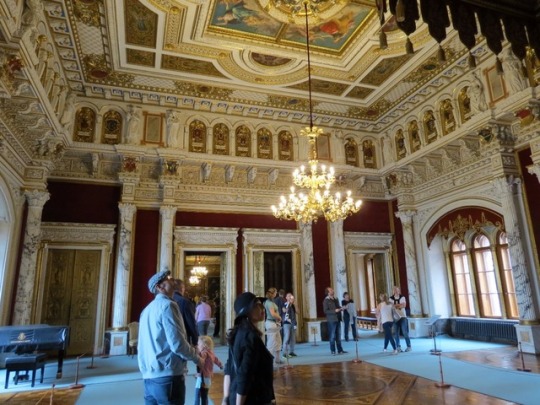



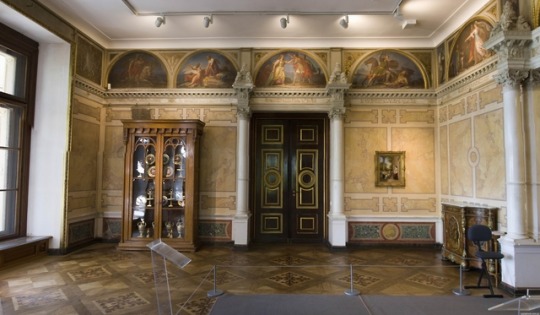

Schwerin Castle The Schwerin Palace (also known as Schwerin Castle, German: Schweriner Schloss, German pronunciation: [ʃvɛ ʁiːn']), is a palatial schloss located in the city of Schwerin, the capital of Mecklenburg-Vorpommern state, Germany. It is situated on an island in the city's main lake, the Lake Schwerin.For centuries the palace was the home of the dukes and grand dukes of Mecklenburg and later Mecklenburg-Schwerin. Today it serves as the residence of the Mecklenburg-Vorpommern state parliament (German: Landtag).Major parts of the current palace were built between 1845 and 1857, as a cooperation of the renowned historicist architects Gottfried Semper, Friedrich August Stüler, Georg Adolf Demmler and Ernst Friedrich Zwirner. The castle is regarded as one of the most important works of romantic Historicism in Europe and is designated to become a World Heritage Site. It is nicknamed "Neuschwanstein of the North". https://en.wikipedia.org/wiki/Schwerin_Palace
29 notes
·
View notes
Photo

speed painting featuring the night, a lake, a red head and ass.
I actually drew a background and then decided it was too light and now it’s kind of gone because I wanted it to be dark.
The night sky is a texture because who has time to draw all these dots.
I spoke about this scene to some folks already that I can imagine Christian just taking a bath in the lake in the middle of the night because it’s exciting since you can get fucking murdered by whatever is out there in the woods. Boy has got to prove to himself that he is lucky and won’t die or something.
1 note
·
View note